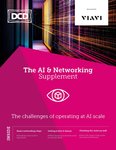When it comes to cloud adoption, there’s no turning back.
According to a 2023 PwC survey, 78 percent of UK business leaders say they’ve adopted cloud in most or all areas of their enterprise. This adoption doesn’t seem to be over, either: according to Couchbase research from earlier this year, 55 percent of IT leaders view further movement to the cloud as “inevitable.”
Customers and end-users increasingly expect seamless services along with proper management and protection of their sensitive information. To satisfy these needs and maximize their returns on cloud investments, businesses must work to optimize their cloud resources.
Giving your cloud a silver lining
Cloud optimization is the design, deployment, and management of cloud resources to maximize the performance and security of cloud while minimizing the costs. In short, it’s about making businesses’ cloud computing resources run like a well-oiled machine.
Although different businesses will have different priorities – some may prioritize costs, others might favor security, and others might focus on app performance – these aren’t mutually exclusive. A solid optimization strategy will address all three.
Cutting cloud costs
Like any resource, most organizations will want to streamline cloud spending while maximizing its value. For many businesses this is a major goal: according to the same Couchbase survey, 44 percent of organizations are actively looking for ways to reduce or gain control of their cloud spend.
A key selling point of the cloud is that businesses only pay for what they use. As a result, a key element of optimization is making sure that spending always matches demand so organizations aren’t paying for idle resources.
More accurate, automated tools mean demand-matching can be more precise than ever before. For instance, a business with peaks in demand for certain applications once would have planned ahead to have enough resource to meet those peaks. Now, automated tools can match resources to demand in real-time, only ever using the exact resources needed. This “cloud bursting” can be heavily customized, such as by setting limits so that spending never spirals out of control.
Greater visibility of, and flexibility in, cloud services can help optimize costs. Identifying unused virtual machines (VMs), storage, and bandwidth helps reduce spending on unnecessary resources. Similarly, greater flexibility in choosing cloud vendors allows organizations to choose infrastructure that meets their exact needs at the best price, instead of being “locked in” to a single offering.
Securing the cloud
Data security is front of mind for almost every organization in 2023, and the cloud is the same as any other IT environment. Security optimization is the process of protecting cloud environments from unauthorized access, data loss, and other threats.
Given the risk of compromising vital customer or business data, or of disruption to essential services, the right security optimization approach is critical.
There are various strategies businesses can take to protect their cloud environments. A key aspect of this is maintaining in-depth, 24/7 visibility of the environment. This enables the organization to spot potential security breaches before they can cause damage and perform regular security audits.
Although most cloud service providers have security monitoring tools built into their offerings, businesses should also make sure that these will meet their needs.
Where needed, businesses should invest in third-party solutions to cover any gaps. For example, encryption tools are a common investment to ensure that even if data falls into the wrong hands, it’s useless to attackers. Regardless of their exact needs, organizations should regularly and rigorously audit cloud providers’ security – reviewing what’s in place, whether it meets their demands, and what – if anything – is missing.
There’s also the human factor to consider: a 2023 study by IT multinational Thales found human error was the leading cause of cloud data breaches. Training employees to use cloud resources securely is vital, along with ensuring providers have similar training is place. For example, a business’ database administrators should be trained in data backup processes and tools, while staff using cloud-based apps should be familiar with multi-factor authentication as standard.
Maximizing cloud performance
Finally, performance optimization is the process of ensuring that cloud applications offer the best experience possible for users.
Businesses can optimize performance by ensuring the necessary software and hardware is in place so cloud resources can work with each other, without glitches or hiccups. For example, if an app uses a lot of memory, it may be because it’s naturally memory-hungry, and so needs additional resources to operate. Or it could be that, with better configuration, that app's memory use will drop.
This configuration extends to other parts of the IT architecture, such as the applications powering databases. If a modern database is properly designed for the cloud and configured correctly, then it can hugely boost application performance.
Caching is another useful technique: storing data in a temporary storage area that facilitates faster access, ensuring your cloud-based data can be accessed and used more quickly.
Containerization technologies such as Kubernetes can also improve the performance of cloud-based business apps, by allowing multiple software instances to run in parallel in a single IT environment. This maximizes cloud utilization, providing the best bang for one’s buck.
Optimization is never over
Carefully planned cloud optimization offers numerous benefits for cloud security, performance, and affordability. But it should never be seen as ‘finished’.
There will always be a little more performance or efficiency to squeeze out, or new developments that allow even greater improvements. This is especially true given the ongoing evolution of cloud technologies.
As such, businesses should work to develop a company-wide culture of continuous optimization, with everyone alert to potential new optimization strategies.
Rather than a concrete and finite goal, 100 percent optimization can instead be seen as an ideal for businesses to strive towards.








